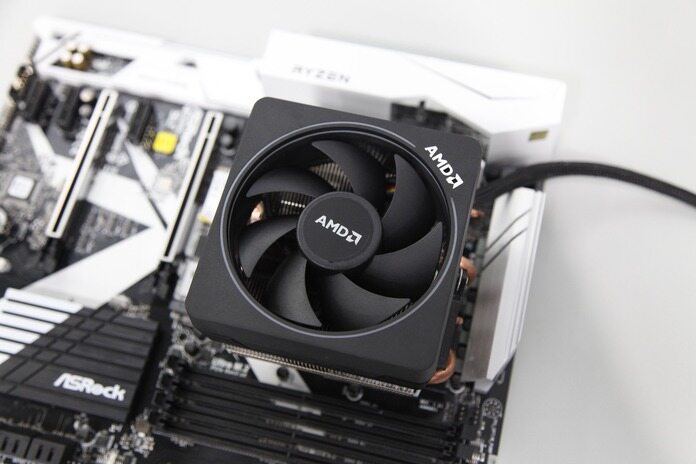AMD Stock (NASDAQ:AMD)
Advanced Micro Devices, also known as AMD (NASDAQ:AMD), is a $150 billion corporation. The company’s share price is at the crossroads of two competing forces, with the AI “super-cycle” on one side and computing market stress on the other. As we’ll see throughout this essay, we believe the “stress” will triumph as AMD stock price falls.
AMD Journey
AMD has worked hard to establish an impressive asset portfolio, but it still confronts stiff competition.
The most exciting lead for the company is undoubtedly in client CPUs, where it has become competitive on consumer CPUs. The company has established a portfolio that is competitive with Intel in the data center; nevertheless, the data center moves significantly slower, which can be detrimental to the company. The company’s gaming division boasts great GPUs, but it lags behind Nvidia.
The acquisition of Xilinx expanded the company’s embedded portfolio; but, as previously mentioned, it was a pricey acquisition.
Results for the First Quarter of 2023 at AMD
A difficult market had a detrimental impact on the company’s Q1 2023 earnings.
Despite the inclusion of a full quarter of revenue from Xilinx, the company’s revenue fell 9% year on year. At the same time, due to the company’s high fixed expenses, not only did revenue fall, but so did margins. GAAP margins fell from 48% to 44%, while non-GAAP margins fell from 53% to 50%.
This had a disproportionate impact on the company’s profitability, which fell to a GAAP net loss, with non-GAAP profits falling from $1.8 billion to $1.1 billion year on year. That’s $4.5 billion every year, giving the corporation a P/E ratio of more than 30%. The company has a $3.5 billion net cash position, which is insufficient to significantly alter its valuation.
AMD Prospects
The company’s prospects remain bleak.
The company anticipates $5.3 billion in quarterly revenue, a decrease both quarter over quarter and year over year. There have been no acquisitions in the 1.62 billion diluted share count. The company anticipates a 50% gross margin, which will be lower year on year, with level operating expenses and tax rates. The business forecasts solely embedded and data center growth year on year, with embedded aided by the Xilinx acquisition.
The outlook for the company this year shows no significant increase as the general market slows after the COVID-19-related boost.
AMD’s Increasing Competition
Unfortunately, the longer the company fails to perform, the more likely it will struggle as competition grows.
Intel’s ownership of fabs is one of the most serious risks to the firm. TSMC is still on the N3 node, and the company aims to launch its 20A node in 2024. That means Intel will be able to out manufacture AMD, rendering AMD fundamentally unable to compete in terms of performance and power consumption.
If Intel meets its expectations, AMD may have a far more difficult time.
Furthermore, as demonstrated by Apple’s departure from Intel, there is a new group of significant technology corporations. These include corporations like Google, Amazon, and Microsoft. They intend to replace AMD with its own in-house CPUs, which they believe will be extremely competitive, especially since AMD has no node advantage.
Graviton processors and related AWS instances from Amazon can save up to 40%. It becomes more competitive as more hosting moves to the cloud. As the second largest cloud computing provider, Microsoft is doing the same. It is also said to be developing its own AI processors, which might help it compete in other markets such as GPUs.
Finally, one of the largest processor firms and the third largest cloud company is Google. In this case, the company intends to compete and employ TSMC as well. This is another significant long-term potential demand concern for AMD.
Thesis Peril
Growing AI markets, as well as escalating chip development costs, pose the greatest dangers to our argument. AI may result in significant demand for the company’s GPUs, particularly higher-margin enterprise-grade GPUs, as witnessed with Nvidia. At the same time, increased chip development costs may make it less profitable for new companies to enter the market.
This is especially true if AMD is able to employ Xilinx to provide bespoke customer solutions.
Conclusion
AMD has made a remarkable comeback from where it was a few years ago. The company’s Zen processor line and overhaul to use cutting-edge TSMC nodes aided it significantly at a time when Intel was battling to sustain business strength while continuing to downsize its manufacturing process. As a result, the company’s market share increased.
However, we anticipate that the company will face a number of challenges in the future. The world economy is faltering, and demand for COVID-19 is diminishing. Furthermore, several of the company’s top clients are developing their own chips, and Intel is aiming for node leadership. When all of this is considered, AMD stock is a risky investment at this time.
Featured Image: Unsplash @ Vladimir Malyutin

















